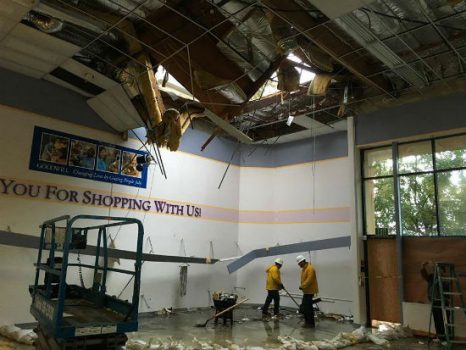Renewing Your Space: The Ultimate Overview to Water Damage Reconstruction
Are you taking care of water damage in your room? Don't stress, we have actually obtained you covered. In this best overview, we'll show you just how to restore your area to its previous glory. From recognizing the signs of water damage to fixing and avoiding future damages, we'll stroll you with each action. Grab your tools and allow's obtain begun on revitalizing your area!
Determining the Indicators of Water Damage
If you see discolored walls or discover a moldy odor, it's most likely an indicator of water damages. Water damage can happen in various forms, and it is very important to be able to identify the indicators beforehand to stop further deterioration. One typical indication of water damages is the existence of discolorations or spots on your walls. These spots might appear darker or yellowish and can be created by water leaking through the walls. Furthermore, if you discover paint peeling or bubbling, it could be an indication of water damages beneath the surface. An additional indicator is a mildewy or moist smell in your home. This odor is usually brought on by mold and mildew or mold growth, which prosper in damp settings. If you detect this odor, it's essential to examine the source and address any water damage immediately. Other indicators to look out for include deformed or drooping floors, puffy or blemished walls, and the presence of mold and mildew or mold on surfaces. By being attentive and identifying these indicators, you can take the required steps to attend to water damages and recover your space to its previous splendor.
Examining the Level of the Damage
Evaluating the extent of damage can aid identify the needed steps for reconstruction. When water damage occurs, it is essential to thoroughly examine the situation to understand the scope of the damage. Begin by examining the impacted areas, such as walls, ceilings, floors, and furniture. Try to find noticeable indications of water damage, such as discoloration, warping, or mold and mildew development. Utilize your hands to feel for any kind of wetness or gentleness in the products. It is likewise vital to look for hidden damage, such as behind walls or under floor covering. This can be done using wetness meters or infrared cameras to discover any moisture that might not show up to the naked eye.
When you have actually assessed the level of the damage, you can determine the essential actions for restoration. If the damages is minimal and restricted to a tiny location, you may have the ability to manage the remediation procedure yourself. Nevertheless, if the damages is comprehensive or includes architectural aspects, it is recommended to seek professional aid. Reconstruction professionals have the competence and devices to successfully alleviate the damages and restore your room to its pre-damaged problem.
Getting Rid Of Standing Water and Drying the Area

As soon as you have removed as much water as feasible, it's time to focus on drying out the room. Use followers and dehumidifiers to speed up the drying procedure.
Screen the humidity degrees and moisture web content regularly. Buy a moisture meter to properly determine the progression. Drying out an area might take several days or also weeks, depending on the level of the water damages.
Fixing and Bring Back Broken Structures and Products
You can begin fixing and recovering broken structures and products by assessing the degree of the damage. Take a careful browse your area and recognize any kind of locations that have been impacted by the water. This can include walls, floorings, ceilings, furniture, and any kind of various other items that have been revealed to water (water removal services in La Mesa). Focus on indicators of bending, discoloration, or mold development. As soon as you have a clear understanding of the damage, you can begin the remediation process.
Begin by eliminating any kind of damp or broken products. This might entail removing damp drywall, removing waterlogged carpet, or discarding ruined furniture. Make sure to use protective gear, such as gloves and a mask, to prevent call with any type of possibly dangerous materials.
Following, thoroughly dry out the room to stop additional damage and the growth of mold. Use fans, dehumidifiers, and open windows to advertise air movement and quicken the try these out drying out process. It is very important to deal with any lingering dampness to avoid future issues.
After the area is completely dry, you can begin fixing and replacing damaged materials. This might involve patching holes in the walls, redecorating wood floors, or repainting surface areas. If essential, seek advice from professionals to ensure proper repairs and repair.
Protecting Against Future Water Damages and Maintaining a Healthy And Balanced Area
As soon as the space is entirely dry, it's important to take actions to avoid future water damage and maintain a healthy setting - water removal services in La Mesa. Taking care of these issues will certainly aid avoid future water damages and ensure the durability of your room.
These measures will aid avoid water accumulation and possible damages to your home. Clear away any type of debris that may block the circulation of water and create it to overflow.

Conclusion
By determining the signs of water damage, analyzing the degree of the damages, removing standing water, and fixing and restoring broken structures, you can invigorate your space. Go ahead, take on that water damage and develop an attractive and secure area once again.